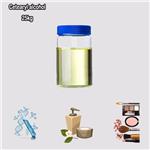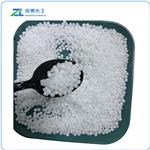Cetearyl Alcohol: Cosmetic Roles & Surfactant Formulations
Cetearyl alcohol is a fatty alcohol that is used in skincare and cosmetic formulations to improve the texture and sensory feel of products. It also has the added benefit of helping to soften and soothe the skin. Cetearyl alcohol, also referred to as cetostearyl alcohol, is a mixture of fatty alcohols, primarily cetyl and stearyl alcohols. Cetyl alcohol is derived from palm oil and stearyl alcohol is derived from stearic acid, a saturated fatty acid. Fatty alcohols are a hybrid between alcohols and fatty acids or oils. Cetearyl alcohol also functions as a surfactant. Surfactants are ingredients that lower the surface tension between two substances, such as two liquids or a liquid and a solid. Another job of surfactants is to degrease and emulsify oils and fats and suspend dirt, allowing them to be washed away. This is possible because while one end of the surfactant molecule is attracted to water, the other end is attracted to oil. Thus, surfactants attract the oil, dirt, and other impurities that have accumulated on your skin during the day and wash them away. Due to these properties, cetearyl alcohol can be found in many different cleansers and body washes.

Allergic contact dermatitis from cetearyl alcohol
Thrombocid ointment (Lacer, Barcelona, Spain) is widely used in Spain and other countries for varicose veins and hematomas. The active ingredient in the commercial ointment is pentosan sodium polyphosphate and the additional ingredients are detailed in Table 1. To our knowledge, there are no reported cases of allergic contact dermatitis (ACD) following its use. Herein we present two cases of allergic contact dermatitis to Thrombocid ointment. Allergic contact dermatitis to Thrombocid ointment has not been reported previously,and there is only one reported case of cutaneous adverse reaction manifested as contact urticarial.Herein we present two patients with ACD to ThrombocidR ointment,owing to cetearyl alcohol. Cetearyl alcohol (or cetostearyl alcohol)is a combination of cetyl and stearyl alcohol present in many topical medicaments and cosmetics in which it acts as an emulsifier and stabilizer.This is an uncommon cause of ACD.[1]
This low frequency of allergy to cetearyl alcohol despite its widespread use relates to its limited ability to penetrate intact skin. In this manner, it bears some resemblance to the classical "paradoxical allergens",e.g. lanolin and parabens, which are usually tolerated by sensitized patients when applied on intact skin. Thereby ACD to cetearyl alcohol is almost always associated with a previous alteration of the skin barrier that facilitates its absorption. In fact,it is a relatively frequent allergen in series of patients with chronic venous insufficiency and leg ulcers. In our first case, the predisposing condition was shoe dermatitis from potassium dichromate. In case 2 it was edema from venous insufficiency and stasis dermatitis. We believe that both patients were probably sensitized to cetearyl alcohol from previous contact with emollients and/or topical corticosteroid creams containing the allergen.
An alkylpolyglucoside surfactant as a prospective pharmaceutical excipient
There is a growing need for research into new skin- and environment-friendly surfactants. This paper focuses on a natural surfactant of an alkylpolyglucoside type, which can form both thermotropic and lyotropic liquid-crystalline phases. The aim of this study was to relate some physicochemical properties of the three formulations based on cetearyl glucoside and cetearyl alcohol, to the results of in vitro and in vivo bioavailability of hydrocortisone (HC). The three formulations contained oils of different polarity, respectively. In vitro permeation was followed through the artificial skin constructs (ASC), while the parameters measured in vivo were erythema index: EI, transepidermal water loss and stratum corneum hydration. The vehicles based on cetearyl glucoside and cetearyl alcohol showed a complex colloidal structure of lamellar liquid-crystalline and lamellar gel-crystalline type, depending on oil polarity. Rheological profile of the vehicle was directly related to the in vitro profile of the HC permeation. In vivo results suggested that the vehicle with MG retarded the HC permeation, whereas less polar IPM and non-polar LP enhanced it. It is suggested that the enhancement is achieved either by a direct interaction with lipid lamellae of the SC or indirectly by improving skin hydration. There were no adverse effects during in vivo study, which indicates a good safety profile of this alkylpolyglucoside surfactant.[2]
References
[1]Armengot-Carbo MA, Rodríguez-Serna M, Taberner-Bonastre P, Miquel-Miquel J. Allergic contact dermatitis from cetearyl alcohol in Thrombocid® ointment. Dermatol Online J. 2016 Jul 15;22(7):13030/qt8ht9300r. PMID: 27617733.
[2]Savić S, Savić M, Tamburić S, Vuleta G, Vesić S, Müller-Goymann CC. An alkylpolyglucoside surfactant as a prospective pharmaceutical excipient for topical formulations: the influence of oil polarity on the colloidal structure and hydrocortisone in vitro/in vivo permeation. Eur J Pharm Sci. 2007 Apr;30(5):441-50. doi: 10.1016/j.ejps.2007.01.006. Epub 2007 Feb 2. PMID: 17331708.
Lastest Price from CETEARYL ALCOHOL manufacturers

US $0.00-0.00/kg2025-09-22
- CAS:
- 8005-44-5
- Min. Order:
- 1kg
- Purity:
- 99%
- Supply Ability:
- 100kg

US $100.00/kg2025-04-15
- CAS:
- 8005-44-5
- Min. Order:
- 1kg
- Purity:
- 99%
- Supply Ability:
- 5000


